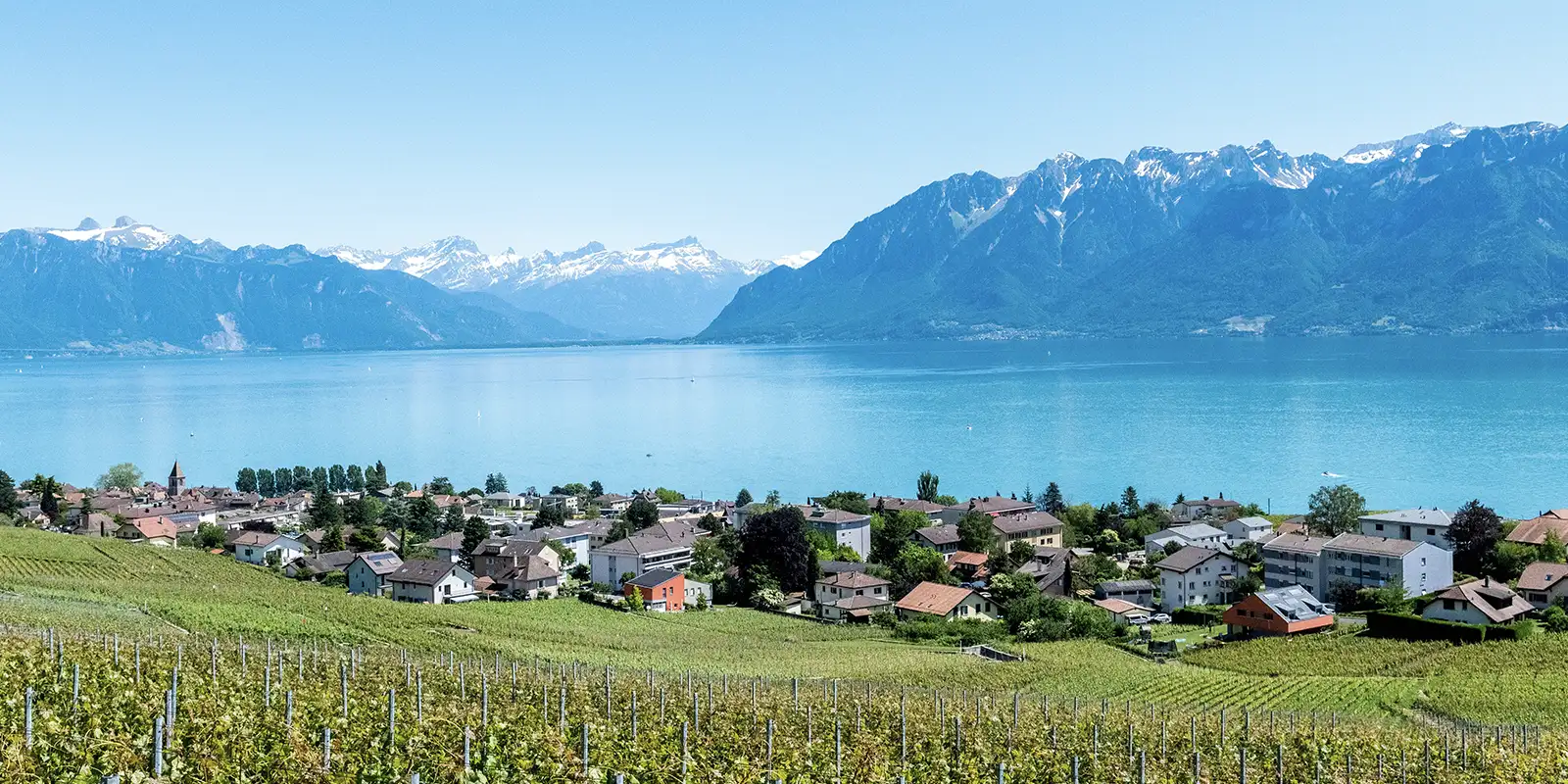Lake Geneva, also known as Lac Léman, is no ordinary body of water. It’s a place where borders blur, cultures mingle, and natural beauty knows no bounds. This amazing lake, shared by Switzerland and France, offers a unique experience for travelers seeking the magic that occurs when two worlds meet. The blend of enchanting towns, serene waters and rugged landscapes makes Lake Geneva a must-see destination.
Facts
Lake Geneva’s pristine blue waters are surrounded by the majestic Alps, creating a visual feast for travelers. It is approximately 45 miles (73 kilometers) in length, making it one of the longest lakes in Europe and the largest lake in Switzerland. Lake Geneva is one of the deepest lakes in Europe at approximately 1,014 feet (309 meters).
Archaeologists have discovered that human settlements around Lake Geneva date back to the Neolithic period (4300 BC to 2000 BC), making it one of the earliest inhabited regions in Europe. The Romans ruled the area around 58 BC and referred to the lake as “Lacus Lemanus.” They established several towns and trade routes around the lake.
Geneva, the largest city on the lake, was originally annexed by France but became part of Switzerland after the Congress of Vienna in 1814-1815. The region’s international character is reflected in its diversity of languages. French, German, and English are the most widely spoken languages, but many others can also be heard.
Cities and Towns
Geneva is a bustling cosmopolitan hub known for its international organizations and interesting attractions. Geneva, often referred to as the “Capital of Peace”, is home to one of the major headquarters of the United Nations and the International Committee of the Red Cross. These two organizations are within driving distance of the iconic Jet d’Eau fountain. Jet d’Eau is one of the world’s tallest fountains, shooting water up to 460 feet (140 meters) into the air.
A short drive from Geneva, the Swiss town of Montreux offers a completely different experience. It’s famous for its annual Montreux Jazz Festival, which draws music enthusiasts from around the world. Freddie Mercury, Deep Purple, and Miles Davis have performed at the event. Montreux is also home to Chillon Castle, a picturesque medieval fortress. The castle’s well-preserved chambers and dungeons make it a must-visit historical site.
Évian, the French town known for its world-famous spring water, is a premier tourist destination on Lake Geneva. Visitors can fill their bottles at the original source, Source Cachat, and sample the famed water that has been celebrated for centuries. Évian is also known for its sophisticated casino, Casino d’Évian.
Outdoor Activities and Climate
Swimming is one of the most popular outdoor activities in the Lake Geneva region. The lake’s exceptionally clean and clear waters make it a safe and refreshing place to take a dip. There are several preferred swimming areas and public beaches, including Baby-Plage, Plage de Vidy-Bourget, and Excenevex. Other water-based activities include sailing, kayaking, paddleboarding, water skiing, and fishing.
The mountains and towns along Lake Geneva’s shores also offer many outdoor opportunities. In the Alps, visitors can enjoy skiing, snowboarding, cross-country skiing, hiking, mountain biking, and rock climbing. Many towns have golf, ice skating rinks, and lakeside promenades for leisurely walks. The Lavaux region is home to the beautiful Lavaux Vineyards, a UNESCO World Heritage site that offers wine tastings with stunning lake views.
The Lake Geneva region experiences four distinct seasons. Summers are warm and pleasant, with average temperatures ranging from 68°F to 77°F (20°C to 25°C). The changing landscapes of spring and autumn make it a lovely time to explore the scenic vineyards. Winters are relatively mild, with average temperatures ranging from 34°F to 43°F (1°C to 6°C).







